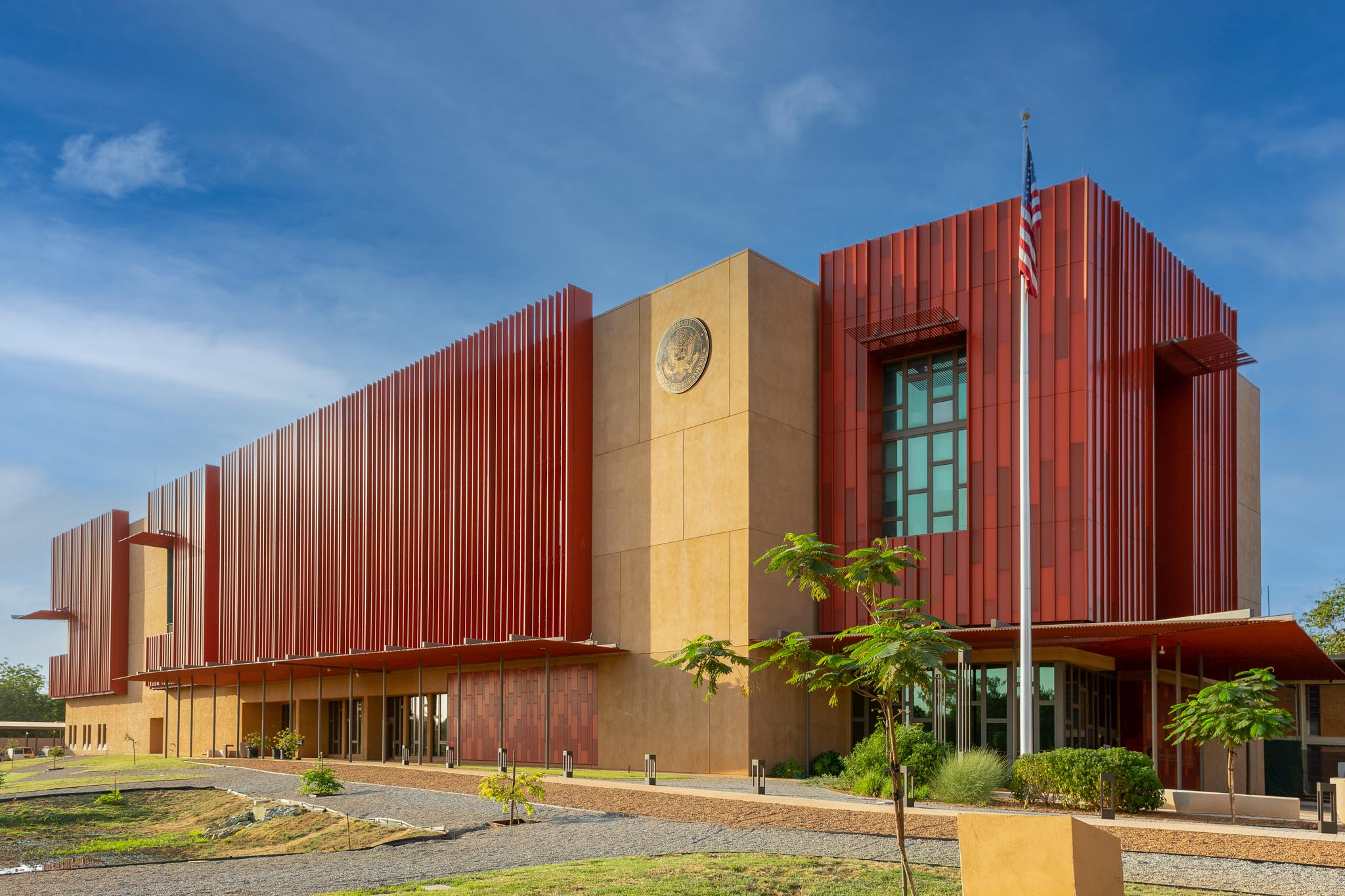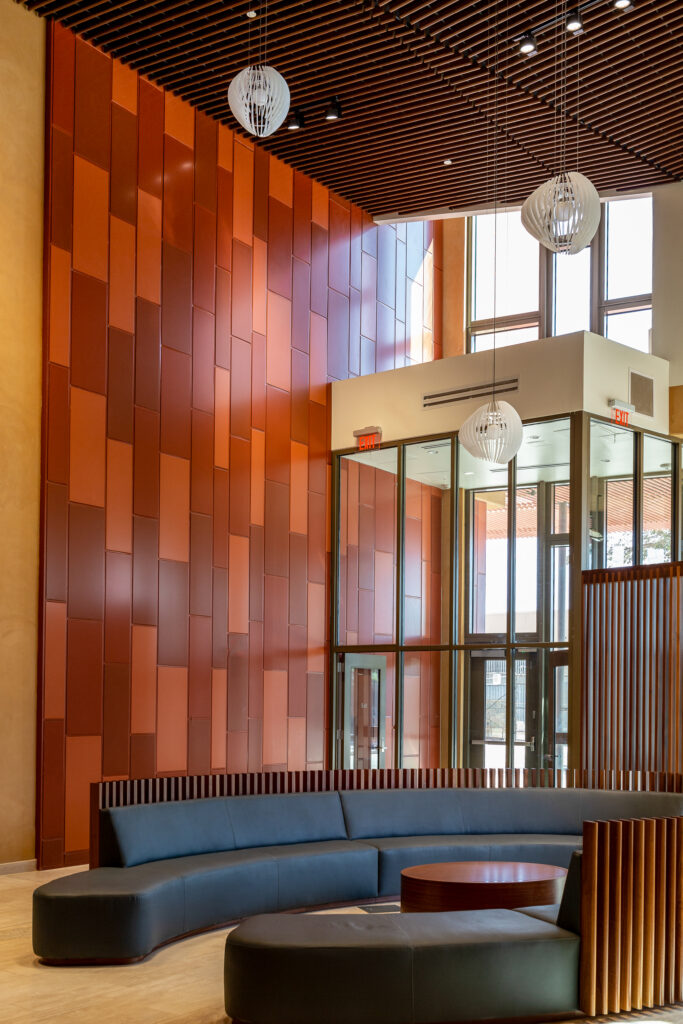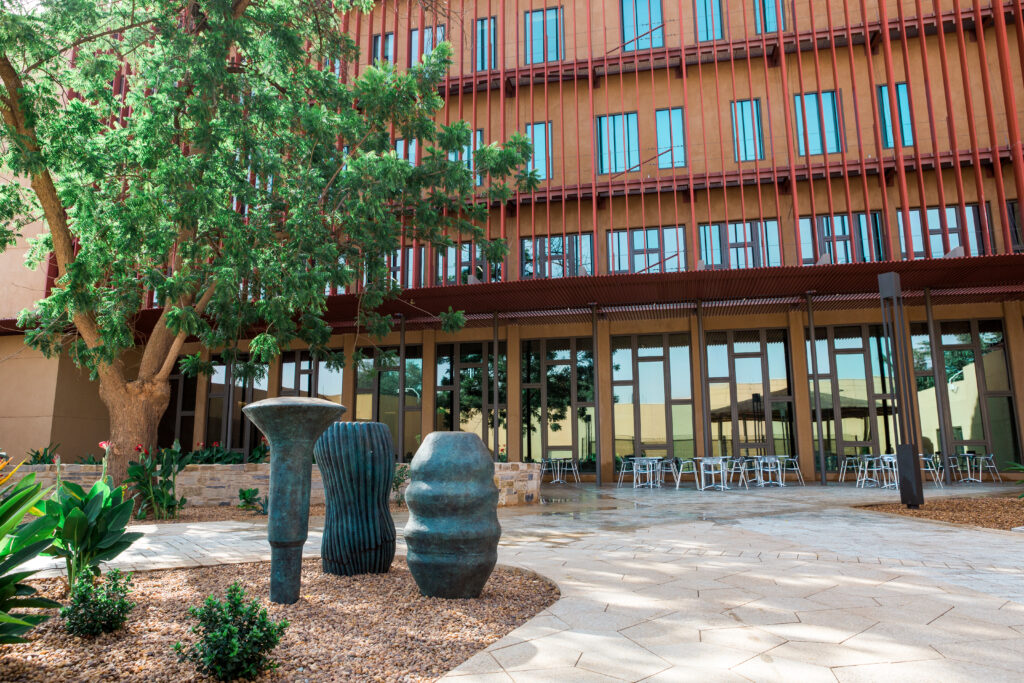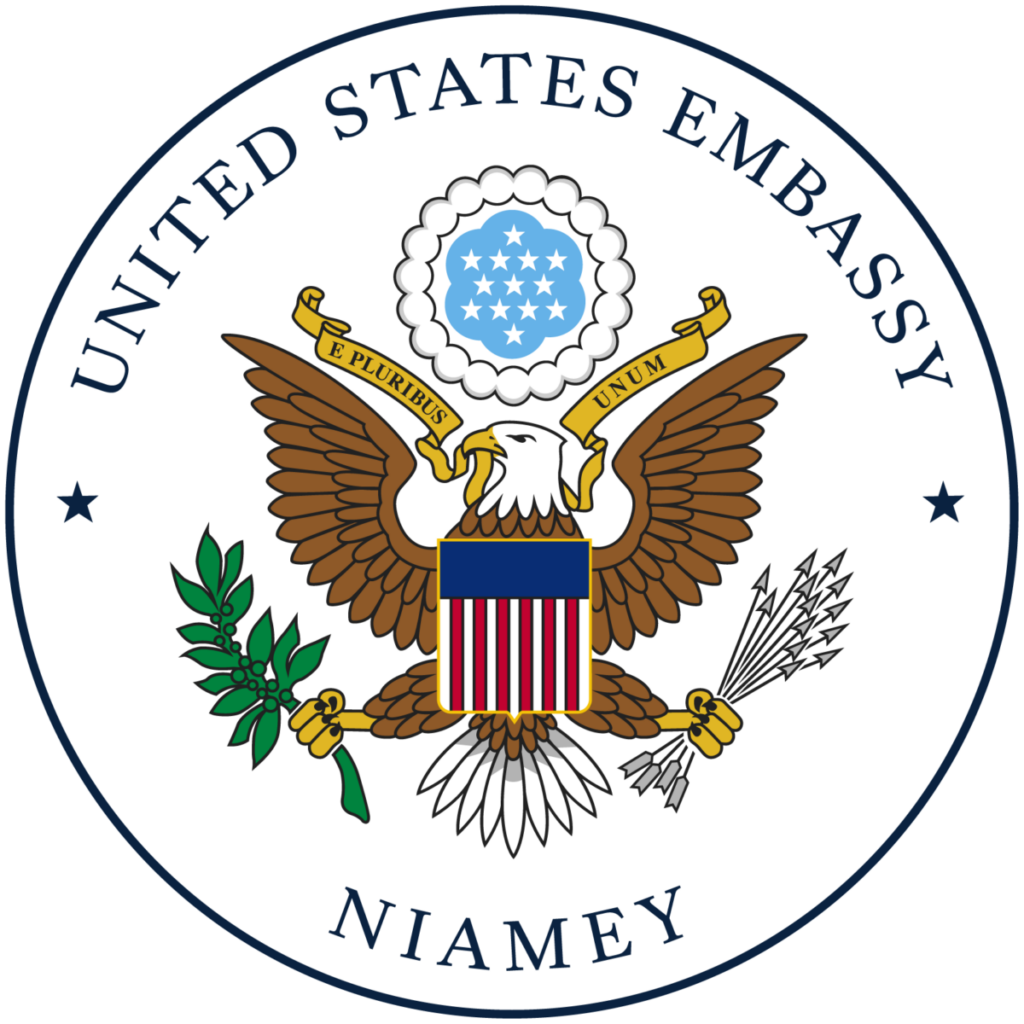
The U.S. Department of State’s mission is to protect and promote U.S. security, prosperity, and democratic values and shape an international environment in which all Americans can thrive. The Bureau of Overseas Buildings Operations (OBO) manages the U.S. Department of State’s building program and sets worldwide priorities for the planning, acquisition, design, construction, operation, maintenance, and disposal of overseas property.
The United States and Mauritius share a strong partnership focused on security cooperation, economic development, and humanitarian assistance. To support these collaborative efforts, the U.S. Department of State Bureau of Overseas Buildings Operations is constructing a new U.S. embassy in Niamey that will strengthen the United States’ relationship with Niger and the Nigerien people, serving as a platform for continued engagement in achieving the administration’s goals.
Project Overview
The Miller Hull Partnership
Architect
B.L. Harbert International
General Contractor
$288 million
Project Budget
$53 million
Estimated Local Investment
2021
Completed
The new U.S. Embassy Niamey supports important diplomatic and commercial relations between the United States.
It embodies OBO’s mission of providing the most effective facilities for U.S. diplomacy abroad ensuring the United States is safer, stronger, and more prosperous.

Design & Construction
The new U.S. embassy showcases U.S. innovation and engineering excellence, designed to withstand Niger’s sub-tropical climate while providing a secure and modern diplomatic platform.
Durable materials, including rubbed architectural concrete and multi-colored metal panel sunscreens reducing glare and heat exposure, ensuring a comfortable work environment.
A workforce of over 1,700 U.S, local, and third-country workers supported construction. The training, experience, and certification provided to workers expands the pool of skilled workers for future mission needs.


Building Performance
A model of building performance optimization, the resilient design reduces risk and operating costs associated with utilities and maintenance while enhancing natural hazards adaptation.
A large-scale 712-kilowatt photovoltaic array significantly reduces reliance on the local power grid, cutting energy costs.
Water efficiency measures, including low-flow plumbing fixtures, are projected to decrease potable water demand by 36 percent.
On-site wastewater treatment allows for 100 percent reuse in irrigation and groundwater recharge, while the site’s stormwater management system captures and gradually releases 90 percent of rainwater, reducing runoff and infrastructure strain.
Landscaping throughout the site is indigenous, featuring plantings that thrive in the local climate and a design that helps manage the impact of Niamey’s intense seasonal rains.
Arts & Cultural Heritage
The new U.S. Embassy Niamey embodies U.S. creativity and heritage through design and craftsmanship, fostering dialogue and diplomacy to strengthen relationships and advance U.S. interests.
A defining feature of the new embassy is the incorporation of U.S. and Nigerien contemporary artwork throughout the building, curated by OBO’s Office of Art in Embassies (AIE).

Press
- United States Breaks Ground on the New U.S. Embassy in Niamey, Niger
- The Bureau of Overseas Buildings Operations Announces the Design Architect for the New U.S. Embassy in Niamey, Niger
- The Bureau of Overseas Buildings Operations Announces the Construction Award for the New U.S. Embassy in Niamey, Niger
